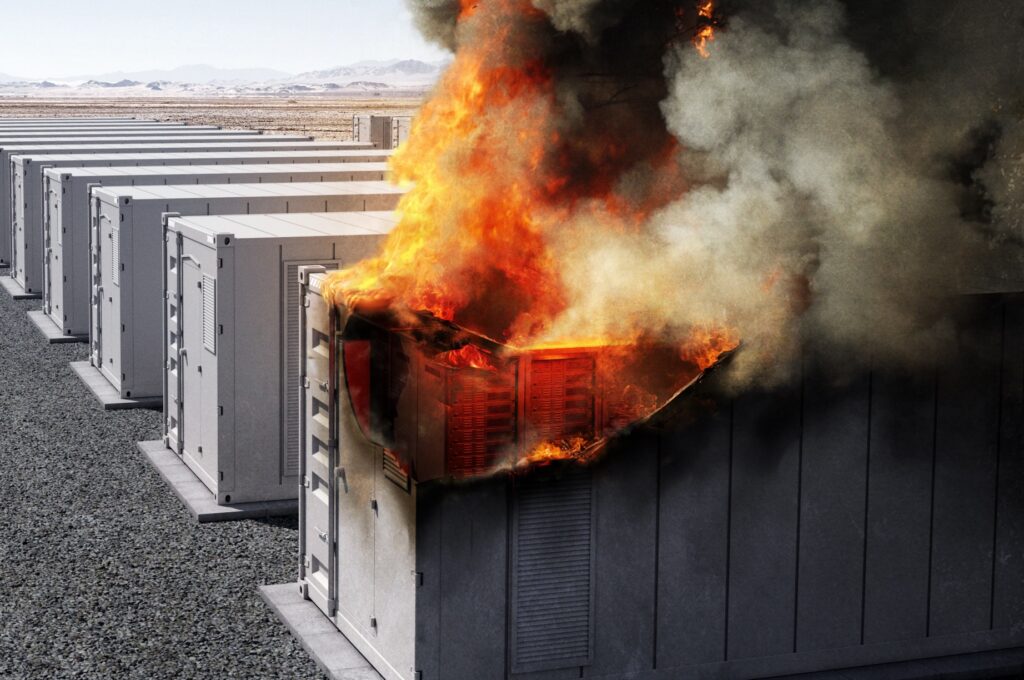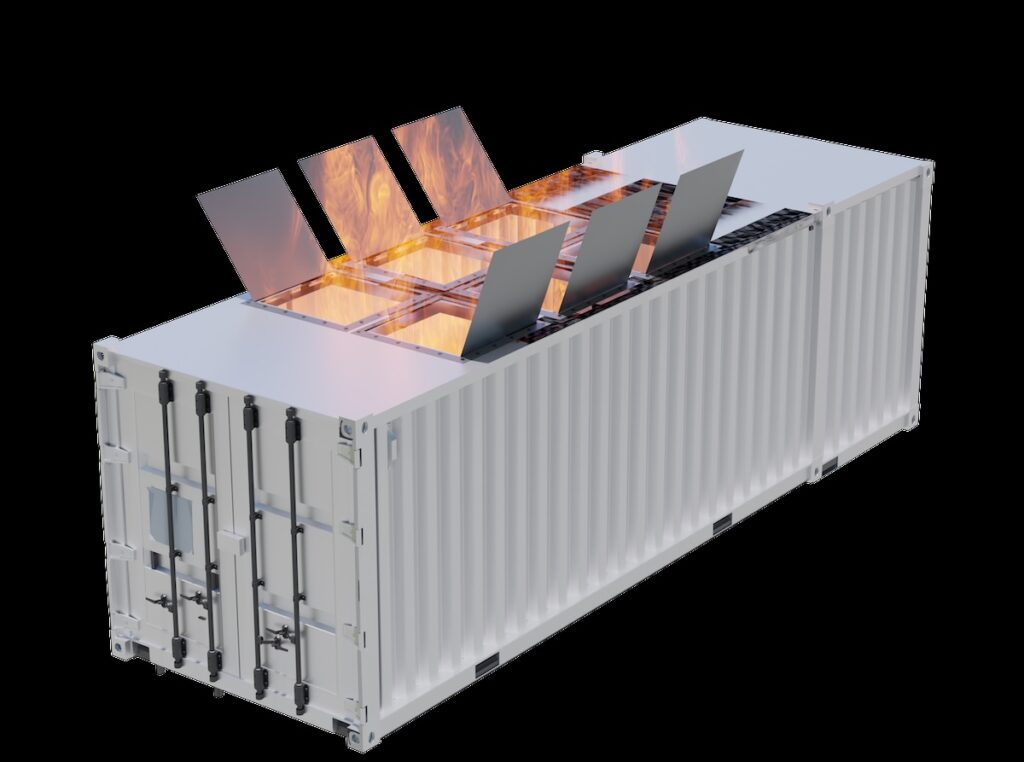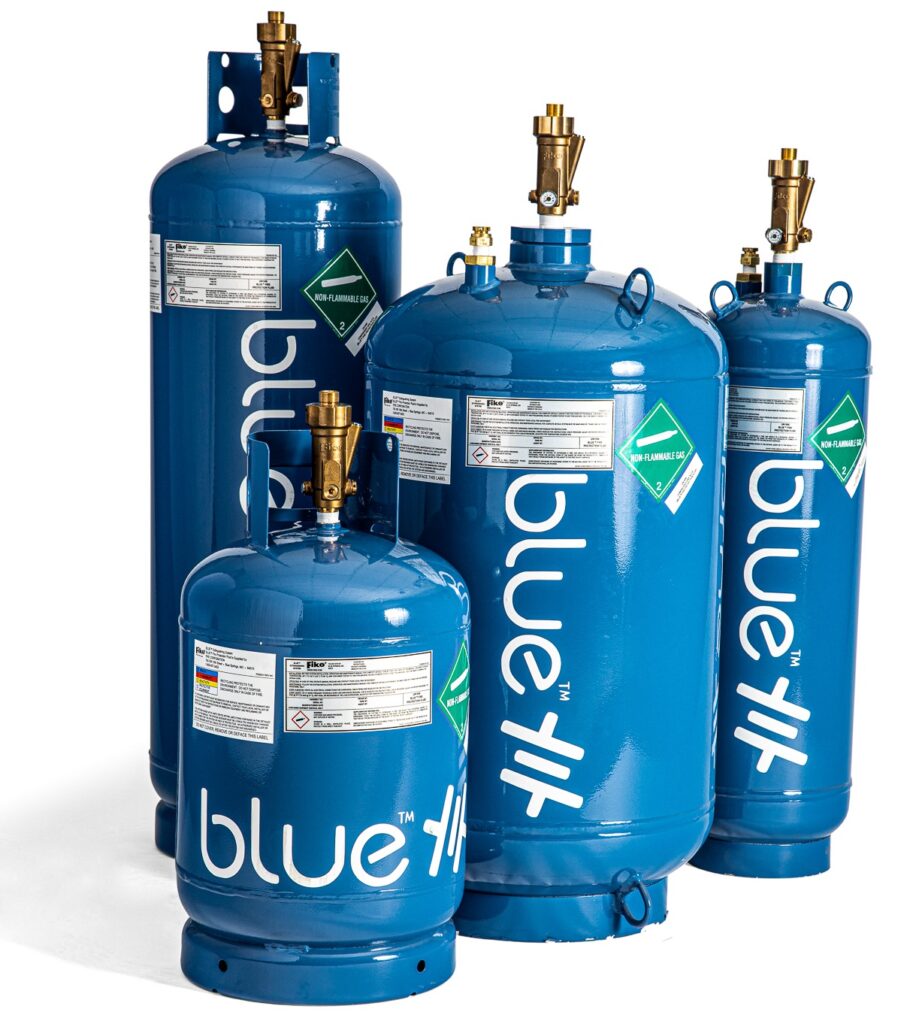How to Achieve Explosion Control in Energy Storage Systems
The threat of thermal runaway in an energy storage system (ESS) is often thought of as a fire hazard, but just as important is its explosion risk.

Along with the intense heat generated from each affected battery cell during thermal runaway is a dangerous mixture of offgas. According to NFPA 855 (A.9.6.5.6), thermal runaway results in the offgassing of “mixtures of CO, H2, ethylene, methane, benzene, HF, HCl, and HCN… and present an explosion hazard that needs to be mitigated.”
Also, due to the “cascading” element of thermal runaway, the more battery cells that are affected, the more explosive gasses that are generated.
That’s why NFPA 855 (A.9.6.5.6) references “explosion control” as an essential element to the overall safety of an ESS. However, many have questioned exactly how does NFPA recommend achieving explosion control? When is it required? And what does reliable explosion control look like?
Current Methods of Explosion Control
To prevent an explosion within an ESS, NFPA 855 states that flammable gas concentrations must not exceed 25 percent of the Lower Flammability Limit (LFL) where gas may accumulate. ESS’s that prove they are able to maintain the LFL under this threshold are exempt by NFPA 855 from requiring explosion prevention and venting.
For those installations that do require explosion control, or even for AHJs (Authorities Having Jurisdiction) who still require a protection strategy, some methods that are used to reduce the risk of combustion include:
Exhaust Ventilation – Ventilation systems are often used to periodically purge the environment of any potential offgassing and provide an extra layer of protection to ensure LFL is maintained below 25 percent.
- Explosion Venting – In scenarios where reliable exhaust ventilation isn’t possible or when protection against the worst-case scenario is necessary, explosion vents may be used to relieve a deflagration’s pressure and flames to a safe location.

- Gas Detection – As an added precaution, gas detectors may be used to identify offgassing between the activation of exhaust vents or the signs of thermal runaway in its very early stages.
“Explosion control in the context of an ESS should include a vent of some sort because every battery that goes into thermal runaway generates explosive gas in that atmosphere and it has to go somewhere,” said Tom Farrell, Principal Engineer of Test and Validation Engineering at Fike Corporation. “It may be possible to achieve enough ventilation to stay below 25 percent of the LFL, but in the case of an unpredictable factor such as an electrical failure that may take those systems down, passive explosion venting is still highly recommended in many applications.”
How to Reduce Generated Offgas from Thermal Runaway

Finally, one other explosion control method exists that is not yet included in NFPA 855 – Fike Blue. Fike Blue flows through the ESS during the early stages of thermal runaway, fills the affected battery module and absorbs the heat to ensure the cascading event is stopped.
Numerous tests at the Fike Innovation and Testing Center have proven that applying Fike Blue normally saves all of the battery cells within the module except for the initial malfunctioning battery and potentially a few of the adjacent cells. Because the spread of thermal runaway is suppressed, the remaining battery cells within the module will be unaffected and therefore will not produce offgas, resulting in a much safer outcome than other scenarios such as letting the module, and potentially the entire ESS, consume itself.
“If you have 1000 cells inside a battery, and you let all those burn, you generate 1000 cells worth of toxic gas that is going into occupied spaces and rendering them unoccupiable for some time, said Farrell. “If you’re able to suppress it and stop propagating thermal runaway, instead of losing 1000 cells, you may only lose 50, which means that gas can be dispersed and get to levels which are not quite so toxic to people in the immediate vicinity. Fike Blue is the only solution our team has successfully tested to both stop cascading thermal runaway and therefore effectively reduce the offgas generated from these hazards.”
Fike is one of the only organizations in the world capable of protecting people and critical assets from the dangers of explosion and thermal runaway hazards. With decades of experience providing explosion protection consultancy, dust testing, risk assessments, system design, installation and maintenance, and now with the development and validation of Fike Blue, Fike is uniquely capable of creating non-standard protection strategies for ESS’s and helping achieve UL9540A certification.

